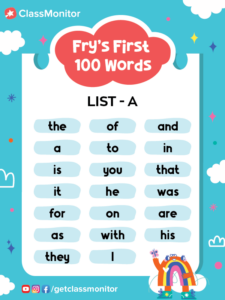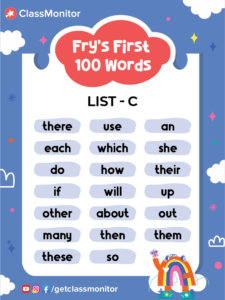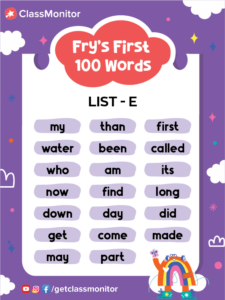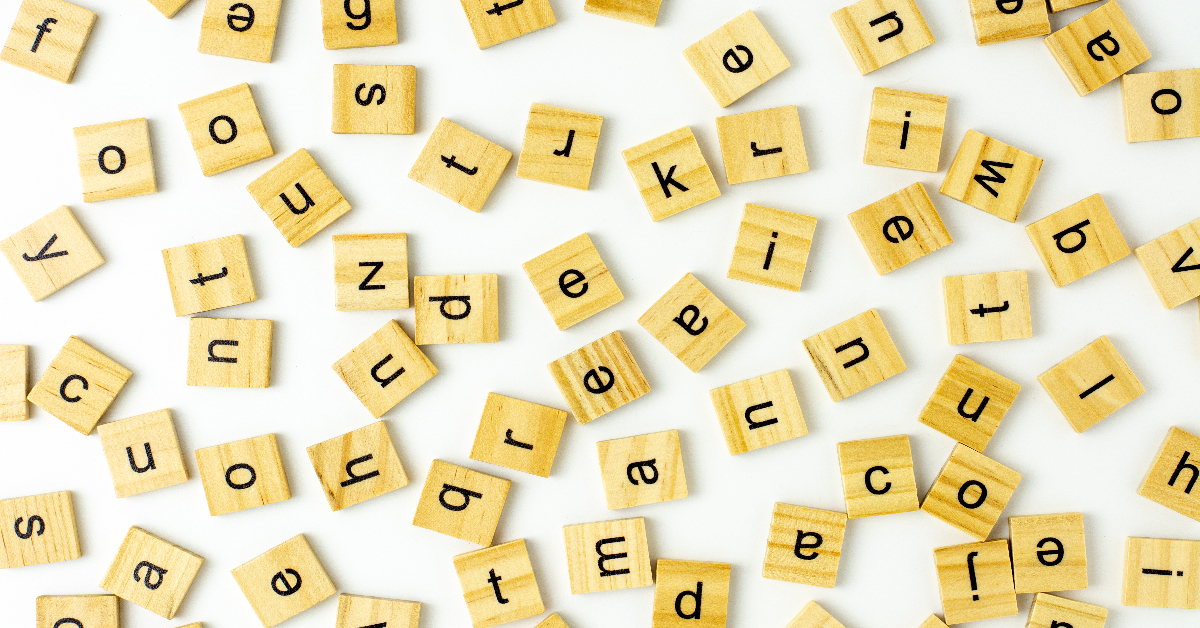Are you looking for a way to teach sight words to your kid without boring them? Great, we asked one of our phonic experts to tell us everything about the sight words and its benefits of teaching to kindergarten students. Here’s what she has to say about it. Do read till the end for a fun & easy games list.
What are Sight Words?
Sight words are high frequency words. Phonics experts encourage children to learn these words by visionary ability due to its frequent use in day-to-day conversation. Words like – “the, of, a, & at” are examples of sight words. They are:
- Not always in sync with the general spelling rules
- Can be adjectives, pronouns, conjunctions, prepositions, common verbs.
- It is difficult to visualize them, like “the, a, there, as”.
What are the benefits of learning Sight Words for Kindergarten?
Sight words cover more than 70% of the text children read. So teachers encourage children to learn common words by sight because of its many benefits.
1. Easy to Remember
Sight words are 2-3 letter words, that makes it easier for children to draw the mental image of these words. These mental images in children’s brains are strong enough to prompt them to understand the word without using their reading skills. Like, take this example from the word-scrambling phenomenon on the benefit of learning sight words.
“If Yuo’re albe to raed this, yuo might konw Sight wrods”
Due to a very common use of these words, you’re reading this right despite its incorrect spelling. Because as an adult, you know these words by sight.
2. Helpful in forming sentences
Sight word lists are a mix of common noun, pronoun, verb, conjunction & preposition that take up 70 percent of what children read. These words are connecting words that help children to make a meaningful sentence. So learning sight words gives them the advantage of forming sentences with a great ease.
3. Save time when Reading
There’s a scientific reason behind teaching sight words. Learning sight words gives cognitive ease to children’s brain when reading. It helps your child to save their reading energy on such words and focus on words that demand his more attention than those which are already known by sight.
4. Make Fluent Readers
If your child has learned sight words by heart, then he already improved half of his reading. Because now your child knows more than 70 percent of the words present in his textbook. Thus, it paves the path for your child to read fluently.
5. Raise Confidence
Rote learning is not fun. But when your child finds out something he already knows, it builds his interest. For instance, imagine your child reading a passage and he recognizes the sight words he had learned in advance, which as a result boosts his confidence and appetite to read more.
6. Improve Reading Comprehension
Reading fluently is good, but there is something more important for your child. And that’s sight words as they also improve the reading comprehension of your children immensely. Here’s how! By this time, he already knows the meaning of sight words. So when reading something, your kid will grasp the sight words at a glance. Now he can focus on words that seek his reading ability. After combining the meaning of both, he’ll comprehend the entire text efficiently.
There’re many techniques for teaching sight words. Teachers use a variety of sight word charts for children. They arrange sight words grade-wise to suit the ability of a child with their age. Initially, for preschoolers, teachers encourage them to learn 3 letter sight words.
First 100 Sight words for kindergarten
Also known as Fry Words, these are 100 most common words that occur frequently in the English language. These are words that a kindergarten should learn to recognize at a glance. To simplify learning these 100 words, we divided them into 6 groups below.
1. Fry Sight Words List A

2. Fry Sight Words List B

3. Fry Sight Words List C

4. Fry Sight Words List D

5. Fry Sight Words List E

How to practice Sight Words?
Here are a few tips on how to effectively help your child learn sight words.
1. Read Aloud with your Child.
Reading aloud a poem or story can help your child to notice the sight words like I, at, the, or many while listening.
2. Sort Sight Words by Categories
This one is great to make it easy for your kid to learn sight words. Either make lists of words or use our list above of Fry Sight Words. This will also help you track how much your child has learned so far.
3. Learn & play.
Children get better at something when they do it daily. Learning sight words works the same way. Find opportunities at home to mix sight words with play activities so you can get the results better. We have also listed some fun activities below for your convenience.
Fun Activities to teach Sight Words
It is important for you to teach your child in a way that engages him better in learning sight words. To ensure this, we have 5 fun activities to teach sight words to kindergarten.
1. Hide & Seek
This is a fun game using paper cups and small things. Here’s how you do it:
1. Write sight words on 3-4 cup
2. Hide something beneath a cup.
3. Swap the cups like a magician
3. Ask your kid to choose a cup
4. But before you reveal the cup, your kid has to say the word written on it
5. Take another cup if this cup is empty.
2. Roll, Read & Pace
To start this activity you’ll need a paper, dice & pen. Follow these steps.
1. Draw margins to make 6 rows & columns on paper.
2. Write 6 sight words in the first row. Also write 1-6 numbers in the 1st row.
3. Get your kid roll the dice on paper
4. If the number is 4, ask your kid to write the word in the 4 column.
Keep this game running until your child doesn’t complete writing sight words on every cell.
3. Flash on the Wall
This is a super fun activity to learn sight words. It may work best at night. You’ll need a few papers and a flashlight.
1. On papers, write sight words in big letters.
2. Tape the papers on a wall.
3. Turn off the lights.
4. Flash the light on a sight word on the wall and let your kid speak it.
We believe this is a great activity to use at bedtime.
4. Scribble on Surface
Time to practice sight words. Do you have a place at home where your kid can scribble? Great. It can be a wall, sidewalks, stairs or any clean surface. Give a chalk to your kid and let him draw/ write words on the surface.
5. Race the Clock.
Another fun activity to practice sight words.
1. Give your kid a paper & pen.
2. Launch a timer app or use the clock.
3. Challenge him to keep rewriting a sight word in a minute.
You now have a pretty good knowledge about sight words and how to teach it. Sight words are one of the many things to teach phonics to your child.
But if you want to improve the reading skills of your child, you need to have various methods in his syllabus other than sight words. ClassMonitor phonics kits make this very easy for you.
Our phonics kit comes with a variety of phonics materials, including worksheets, flashcards, posters, puzzle & games, poem & story cards and much more to level up the reading skill of your child.
It comes with multi activities that use large concepts advised by experts to teach phonics to your child.
Learn more about our Phonics Kit
Must Read:
Why is Phonics Important? How to Teach Phonics to Kindergarten [Complete Guide]





